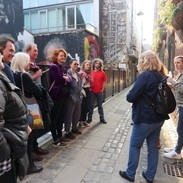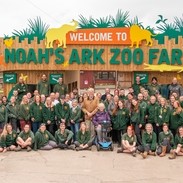Sustainability Jargon Buster
All subjects have their jargon and acronyms. These plain English definitions should help you navigate these topics with confidence.
Jargon Intro
Anthropocene: Current geological age, viewed as the period in which human activity has been the dominant influence on climate and the environment. Biodiversity: The variety of life on earth, including all plant and animal species. Biomass: Plant or animal material used for energy production, or in industrial processes as raw substance for various products. Types include purposely grown energy crops, wood or forest residues, waste from food crops, horticulture, food processing, animal farming, or human waste from sewage plants. Biomimicry: Emulating the models, systems, and elements of nature to solve complex human problems. Carbon capture and storage (CCS): The process of capturing and storing carbon dioxide before it is released into the atmosphere. As yet it remains more of a theory than a tried and tested solution. Carbon credit: A permit which allows a country or organisation to produce a certain quantity of carbon emissions which can be traded if the full allowance is not used. Carbon footprint: The amount of carbon dioxide released into the atmosphere as a result of the activities of a particular individual, organisation, or community. Carbon neutrality: Neutralising carbon dioxide emissions by balancing them with removal elsewhere or eliminating them altogether. Carbon offsetting: An often controversial way to neutralise or compensate for your carbon footprint by funding carbon reduction projects. Carbon tax: Tax levied on the carbon content of fuels, in sectors like transport and energy. Carbon taxes aim to reduce carbon dioxide emissions by increasing the price of fossil fuels and decreasing the demand for them. They are a form of carbon pricing. Circular economy: A circular economy is based on the principles of designing out waste and pollution, keeping products and materials in use, and regenerating natural systems. An example would be a production or manufacturing system that is completely self-contained. Climate crisis: A headline descriptor for the threat of dangerous and irreversible changes to the world’s climate. Climate positive: Climate positive describes an activity that goes beyond achieving net zero carbon emissions to creating an environmental benefit by removing additional carbon dioxide from the atmosphere. Closed loop: A system that does not accept inputs from, or create outputs to, another system. An example would be a production system that is entirely self-contained, or one that produces no external waste or by-product. CO2: Carbon dioxide is a naturally occurring gas in earth’s atmosphere. It is the main greenhouse gas released by human activities such as burning fossil fuels and biomass, industrial processes, and land-use change. CO2e: Short for carbon dioxide equivalent. This covers all greenhouse gas emissions that contribute to climate change, including carbon dioxide (CO2), methane (CH4), nitrous oxide (N2O), and refrigerant gases like hydrofluorocarbons (HFCs). Some of these GHGs cause more global warming than others. Using CO2e makes it easy to compare the impact of activities that emit different greenhouse gases. For example: 1kg CH4 = 25kg CO2e. This tells us that methane is 25 times more powerful as a greenhouse gas than carbon dioxide. Compostable: Capable of being used as compost. Compostable materials are materials that break down completely into non-toxic components (water, carbon dioxide, and biomass) that will not harm the environment. It is worth noting that some products, such as plant-based plastics, may be promoted as compostable when in fact they need industrial processing to break down properly. Conscious consumerism: Increased consumer awareness of the impact of their purchase decisions on the environment and society. COP: A Conference Of Parties is the governing body of an international convention – in this context to discuss global climate change. CSR: Corporate Social Responsibility is a long-standing approach to doing the right thing and is centred mainly on waiting to see what profit is generated in a trading year and then distributing some of it to good causes at the end.
Doughnut economics: A visual framework for sustainable development – shaped like a doughnut – combining the concept of planetary boundaries with the complementary concept of social boundaries. Downstream emissions: Emissions that occur in the life cycle of a material or product up to the point of sale by the producer. Ecosystem: A natural system consisting of all living organisms (plants, animals, and microorganisms) in a specific area functioning together. Environmental footprint: The effect that a person, company, or activity has on the environment - for example, the amount of natural resources used and the amount of harmful greenhouse gases produced. ESG: Environmental, Social, Governance refers to the three central factors in measuring the sustainability and societal impact of business operations. Ethical: Relating to beliefs about what is morally right and wrong. Fairtrade: Fairtrade refers to producers in developing countries being paid a fair price for their work by companies in developed countries. The price paid provides enough for producers to afford essentials such as food, education and healthcare. Fossil fuels: Fossil fuels are made from ancient deposits of decomposed plants and animals. They are found in the earth’s crust and contain carbon and hydrogen, which can be burned for energy. Examples include coal, oil, and natural gas. Global warming: The gradual increase in earth’s average atmospheric and ocean temperatures. Good Life Goals: Created by the World Business Council for Sustainable Development, these are 17 suggestions that explain how individuals can change their personal behaviour to help achieve the equivalent Sustainable Development Goals. Great Acceleration: A term referring to the world’s unprecedented growth since the 1950s and, as a result, the unprecedented deterioration of the natural resources needed to fuel this growth. Green claims code: Introduced in 2021 in the UK by the Competition and Markets Authority (CMA) to combat corporate greenwashing. Green hushing: Either a complete lack of comment on ethical matters by a company, or a failure to communicate based on nervousness about speaking publicly about them. Green recovery: Packages of environmental, regulatory and fiscal reforms to recover prosperity in a responsible way after the COVID-19 pandemic. Greenhouse gases (GHGs): Atmospheric gases of human or natural origin that absorb and emit heat. This results in heat being trapped in the climate system. The main greenhouse gases in the atmosphere are carbon dioxide, nitrous oxide, methane, and water vapour. Green growth: A path of economic growth that uses resources in a sustainable way (unlike traditional economic growth that typically does not account for environmental damage). Greenwashing: To make people believe that your company is doing more to protect the environment than it really is. Human capital: Value derived from employees such as physical presence, knowledge, skills, abilities, intellectual capacity, spirituality, empathy, and passion. Impact investing: Investments made with the intention of generating positive, measurable social and environmental impact as well as a financial return. Inertia Principle: This is a guiding principle of the circular economy, as introduced by Walter Stahel. “Do not repair what is not broken, do not remanufacture something that can be repaired, do not recycle a product that can be remanufactured. Replace or treat only the smallest possible part in order to maintain the existing economic value.” Life Cycle Analysis (LCA): A way of calculating the overall impact that a certain product has on the environment throughout its life. Linear economy: A linear economy traditionally follows the take-make-use-waste plan. Raw materials are collected and transformed into products that are used until they are discarded as waste. Living wage: A wage that is high enough to maintain a normal standard of living in the relevant area of the country.
Natural capitalism: A global economy in which business and environmental interests overlap, recognising the interdependencies that exist between the production and use of human-made capital and flows of natural capital. Natural Capital Credits are units issued to certified projects that denote avoided emissions or removals by projects that protect biodiversity and are socially responsible. Nature-based solutions: The use of nature to jointly tackle social and environmental issues, such as climate change, food and water security, pollution and disaster risk. For example, using natural solutions in river management systems to prevent flooding. NDCs: Nationally Determined Contributions. These embody efforts or commitments made by each country to reduce their national emissions and adapt to the impacts of climate change. Net zero: A state in which the activities of a company result in no net impact on climate from greenhouse gas emissions. This is achieved by reducing emissions to zero or counterbalancing their effect with an appropriate amount of carbon removal elsewhere in the business. Organic: Relating to or derived from living matter. It is often used in relation to food or farming methods that do not use chemical fertilizers or pesticides. Paris Agreement: This agreement, sometimes referred to as the Paris Accord, was a United Nations Convention on Climate Change that aimed to deal with greenhouse gas emissions. Planetary boundaries: Set of nine parameters within which humanity can develop and thrive for generations to come, so long as they are not exceeded. Recycling: The action or process of converting waste into reusable material. Reforestation: The natural or intentional restocking of existing forests and woodlands that have been depleted. Regenerative tourism: The idea that tourism should leave a place better than it was before. Its main goal is for visitors to have a positive impact on their holiday destination, leaving it in a better condition than they found it. This involves revitalising and regenerating it by contributing to a positive cycle of impacts on local communities and economies. Remanufacturing: To manufacture an old product into a new product. Repurposing: Finding a new use for an idea, product, or building. Science Based Targets initiative (SBTi): This initiative champions science-based target setting to boost companies’ competitive advantage in the transition to the low-carbon economy. It is a collaboration between Carbon Disclosure Project (CDP), the United Nations Global Compact (UNGC), World Resources Institute (WRI), and the World Wide Fund for Nature (WWF), and one of the We Mean Business Coalition commitments. Scope 1: Direct emissions from owned or controlled sources such gas and company car fuel. Scope 2: Indirect emissions from the generation of purchased energy, such electricity. Scope 3: All other indirect emissions that occur in the value/supply chain, including both upstream and downstream emissions. Sustainable: In 1987, the United Nations Brundtland Commission defined sustainability as “meeting the needs of the present without compromising the ability of future generations to meet their own needs.” Sustainable Development Goals (SDGs): The 17 goals adopted by all United Nations Member States in 2015 as a universal call to action to end poverty, protect the planet and ensure that all people enjoy peace and prosperity by 2030. Stakeholder: Any individual or organisation with a vested interest in a business, whether emotional or financial. Upcycling: Also known as creative reuse, this is the process of transforming by-products, waste materials, or unwanted products into new materials or products perceived to be of greater quality – often through artistic or environmental value. Upstream emissions: Emissions that occur in the life cycle of a material or product after the sale by the producer (including distribution and storage, use of the product and end of life). WEEE: Waste from Electrical and Electronic Equipment. Zero to landfill: The common interpretation of this is that at least 99 percent of generated waste is diverted away from landfill. This means that all waste produced is either reused, recycled, composted, or sent to energy recovery. The Carbon Trust have developed a zero waste to landfill certification programme.
bottom page nav
previous section
next section







